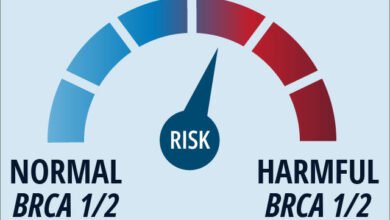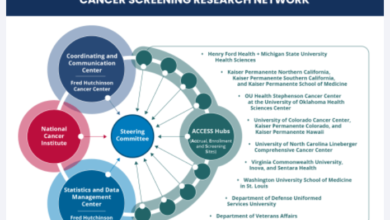Cancer Research UK – Science blog

In the Autumn 2022 budget, UK Chancellor Jeremy Hunt committed to publishing a Long Term Workforce Plan for the NHS, with independently verified workforce projections for the next 5, 10, and 15 years.
This move has long been called for by healthcare and research charities – including Cancer Research UK – as well as numerous think tanks. In his previous role as Chair of the Health and Social Care Select Committee, Hunt himself even recommended it.
So, we’re all agreed that we need a plan. But what would a good one look like?
Here we lay out five key tests for the NHS Long Term Workforce Plan to ensure it delivers for people affected by cancer, and the staff that take care of them.
1. Has the UK Government committed to funding the delivery of the plan?
Even a good workforce plan won’t make a dent in the challenges facing the NHS if it isn’t backed up with meaningful, long-term investment. That’s about providing for the future of the NHS, helping to build a health service that can deliver the very best for people with cancer, today and tomorrow.
Prime Minister Rishi Sunak has promised that the plan will lead to the “largest expansion in training and workforce” in the NHS’s history. Recent indications have suggested it will focus heavily on early-stage training, by, for instance, increasing the number of medical and nursing school places.
That’s really important, but, for people affected by cancer to benefit directly, we need to get the whole training pipeline right.
For doctors, that extends from the day a student enters medical school to the moment they become a fully fledged consultant oncologist, radiologist or surgeon.
And good cancer care depends on nurses and other healthcare professionals, too. We also need to see detail on funding for extra training places in those key cancer professions.
On top of that, the plan needs to be tied together with robust proposals for implementation, oversight and accountability – ways to make sure it can become a reality.
2. Does it take action on retention alongside recruitment?
It takes many years to train highly qualified staff, but the plan needs to start delivering now.
Now, when half of oncologists are reporting burnout, increasing numbers of junior doctors are looking to leave the NHS, and more and more experienced doctors are approaching retirement.
Any plan for the future of the NHS has find a way to address this. The service needs to keep experienced staff and make sure they’re in position to bring the most value to patients.
Without targeted action on retention, plans to train new staff would be like pouring water into a leaky bucket, especially when you account for the benefits experienced staff bring to the NHS.
Competitive pay, flexible working, improved wellbeing support, career progression, and opportunities to engage in professional development through training or conducting clinical research are all evidence-based ways to boost retention. The NHS Long Term Workforce Plan must provide funding to enable as many of these approaches as possible.
3. Are projections included for the next 5, 10 and 15 years?
Chronic workforce shortages are the biggest barrier to transforming cancer services and improving survival for people affected by cancer in the UK. The NHS workforce has been stretched to its limit, with record numbers of vacancies and shortages across key cancer professions.
For the plan to begin to address these workforce shortages, we need to know exactly how many staff are needed in key NHS roles in the short, medium and long term.
The Chancellor promised he’d tell us, and we’re holding him to it. The plan must include projections for staffing needs for the next 5, 10 and 15 years. These projections should also be independently verified, and the Government needs to be transparent about how it has drawn its conclusions.
Without that, we cannot understand the full scale of the workforce crisis facing the NHS, or assess how far the Government’s commitments go to meeting current and future patient needs. In short, until we know where the gaps are, we can’t fill them.
And if we don’t fill those gaps, we can’t create a workforce capable of delivering world-leading services for people with cancer.
4. Are the needs of cancer considered?
It can be hard to say exactly who to include in any definition of the ‘cancer workforce’. Many different specialists play important roles in people’s cancer journeys, which span screening, diagnosis, treatment and care.
But a good place to start is the 2017 Cancer Workforce Plan. That highlighted seven key specialisms across oncology, radiology, radiography, gastroenterology, pathology and specialist cancer nursing.
Almost all these groups are facing acute shortages. The Long Term Workforce Plan must identify increases in staffing needed across these roles and put fully funded commitments in place to deliver them.
It’s not just clinical staff, either. Non-clinical staff – including admin, IT and managerial staff – play an essential role in every patient pathway. They will also be key to the digital transformations needed across cancer services. But, today, data on these groups is patchy. The UK Government must also consider non-clinical staff needs in workforce planning, making sure that staff are in place to deliver a truly patient focused, data-driven and digitally enabled NHS.
5. Is there a commitment to future workforce planning?
We have seen over a decade of underinvestment and poor planning take its toll on workforce education, training, recruitment and retention. The inevitable consequence has been the NHS workforce crisis we face today, with the health service facing staff shortages across almost every profession relevant to cancer care.
The Long Term Workforce Plan has the potential to begin reversing this trend. But it can’t be seen as ‘one and done’.
We know that the pressures on the NHS are only going to increase. Our modelling suggests the UK will see a third more cancer cases by 2040.
But there’ll be new opportunities alongside those challenges. Cancer research and innovation has the potential to radically change how we detect, diagnose and treat the disease. That means we’ll need to see new and different skills within the cancer workforce. We need to plan for those positive changes, too.
To deliver a real step-change in our approach to healthcare workforce planning, address future challenges, seize opportunities, and ultimately deliver the change people affected by cancer deserve, the upcoming NHS Long Term Workforce Plan must be just the first in a series of consistent and iterative workforce plans.
Beyond the plan
Taken together, these five questions are our litmus test for whether the Long Term Workforce Plan delivers for people affected by cancer.
But the work doesn’t end with a good plan. It needs to be continually monitored, with independent evaluation of performance and progress against recommendations.
The UK Government, the NHS and the cancer community need to work together to ensure that the plan is implemented and updated to reflect changing patient needs.
So, we’re getting a head start. We’ll be setting out how we think workforce planning needs to change in our Manifesto for Cancer Research and Care, to be published at the end of the year.
Naser Turabi is Director of Cancer Intelligence at Cancer Research UK.
Source link
#Cancer #Research #Science #blog



